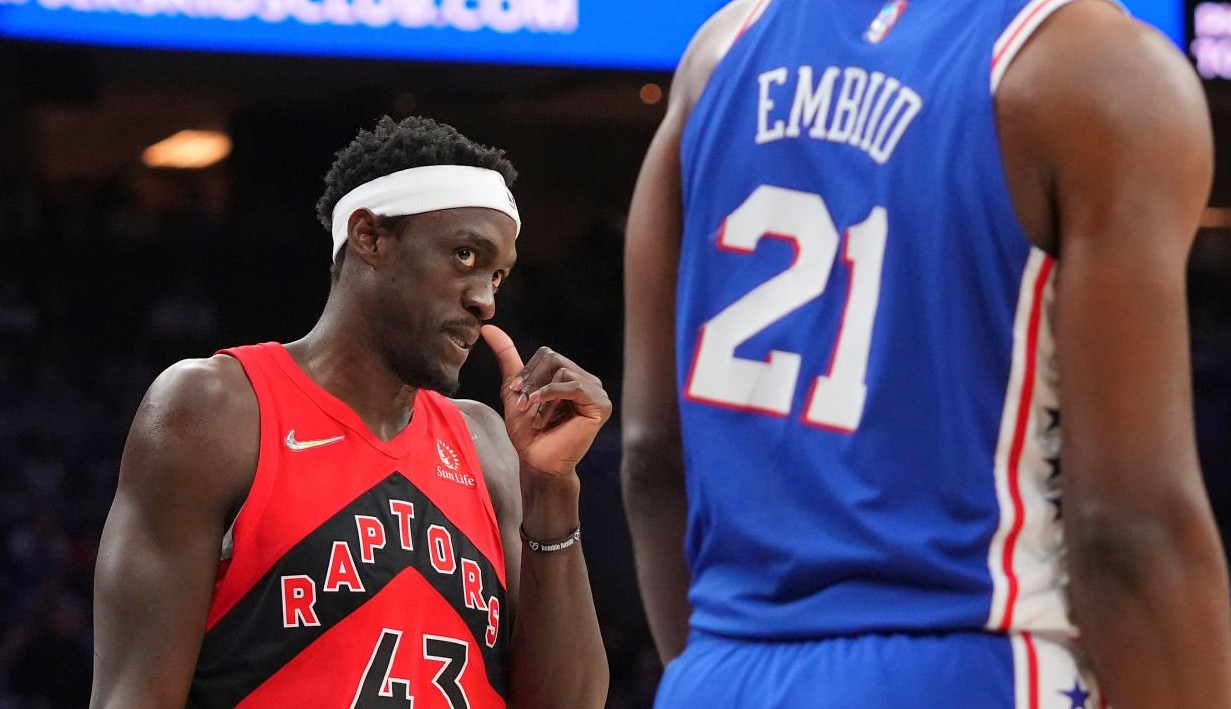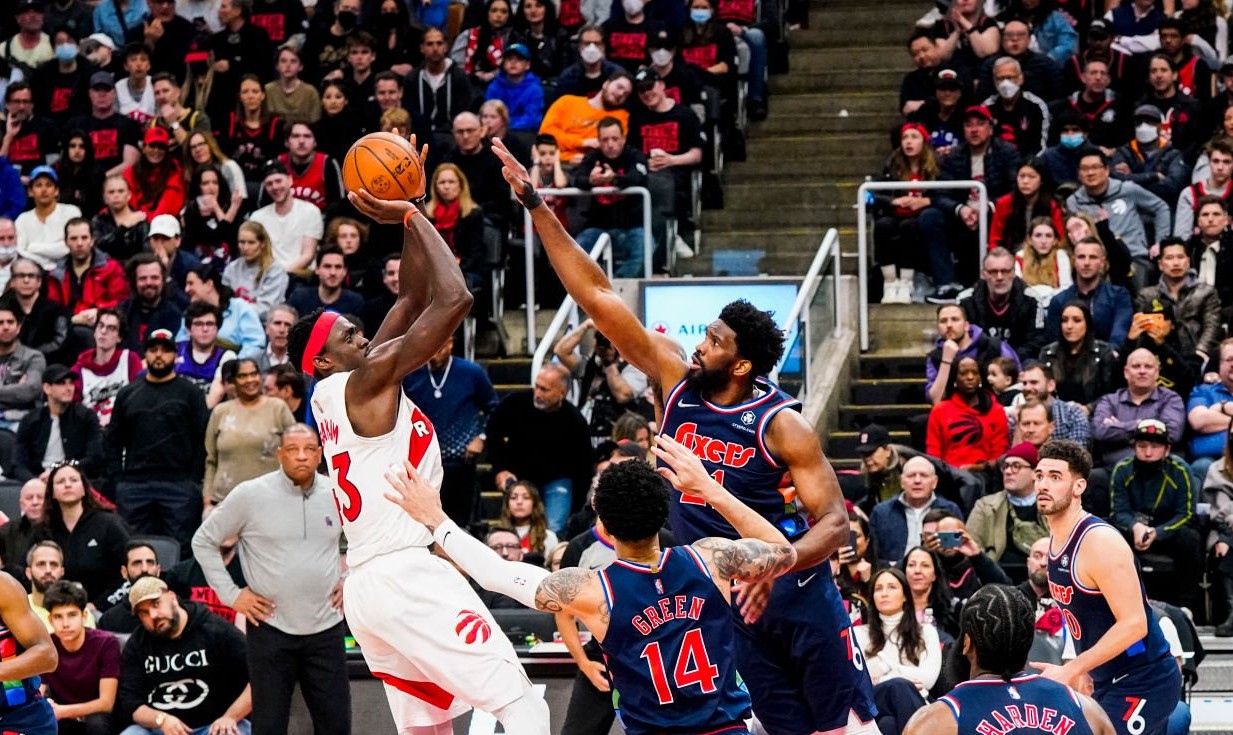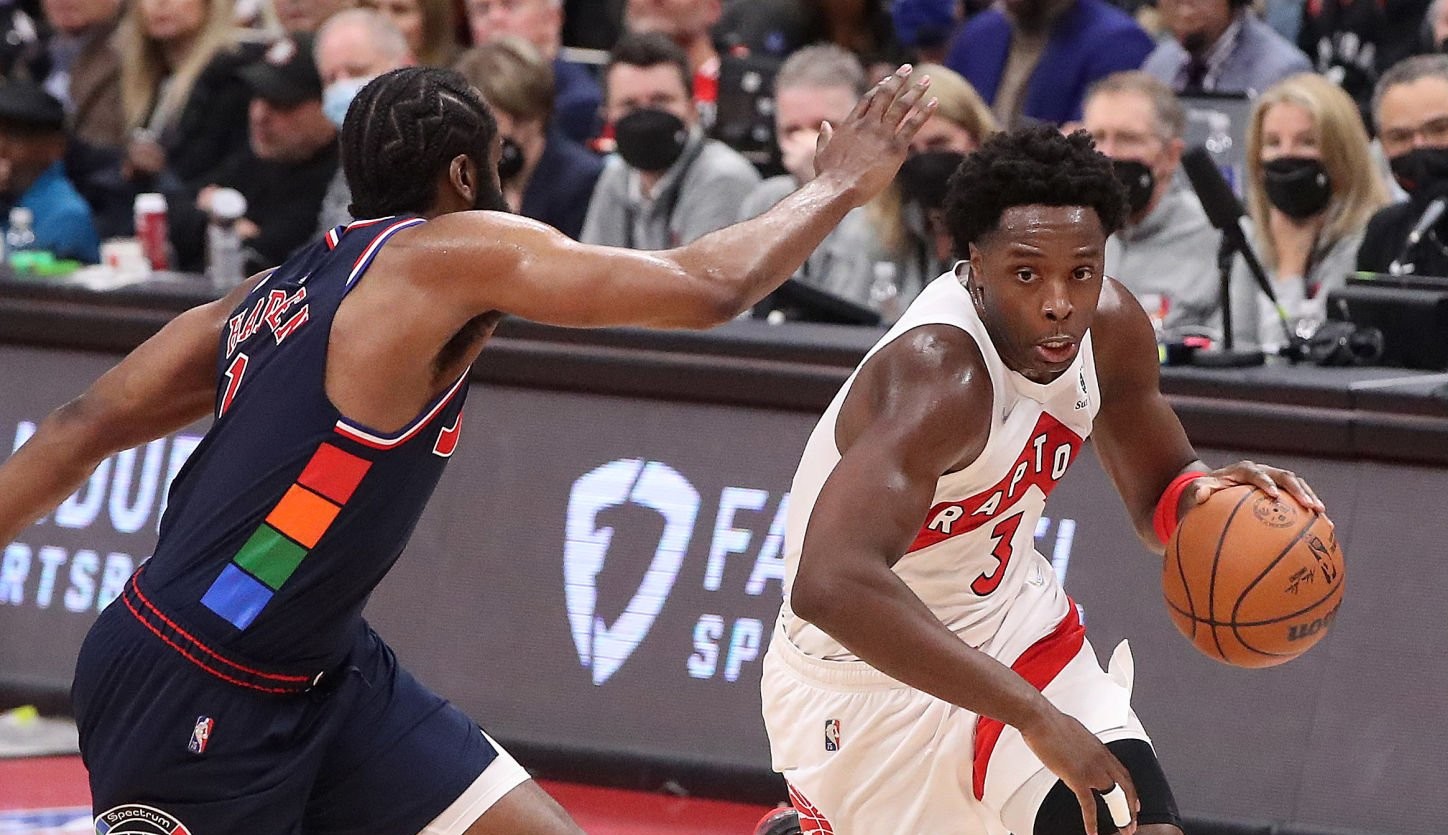Trying to discern impact on the basketball court can be like unstacking Russian nesting dolls. The harder you look, the more you pull, the deeper it goes. By now, I’m sure you’ve heard of Pascal Siakam’s monstrous 34 points in the face of maximal defensive attention from the Philadelphia 76ers. After floating to end Game 3, Siakam bodily lifted the Toronto Raptors across the finish line in Game 4 for their first win of the series.
But his offense wasn’t necessarily his most significant contribution. On the other end, Siakam was crucial to so many components: Tyrese Maxey shooting 4 for 12, Joel Embiid shooting 7 for 16, Embiid committing five turnovers, and plenty more besides. Siakam may have been the sun, the moon, and the stars on one end, but he didn’t rest on the other. Far from it. You can see that on the surface of his game — two blocks, a steal, eight defensive rebounds. But peel away the surface layer, and there’s so much more that he did.
NBA Advanced Stats is notoriously unreliable in accurately determining who the nearest shot-contester is in an NBA game, so I hand-tracked every defensive possession in Game 4 against Philadelphia. He contested 17 shots — he averaged 16 a game in the regular season, 10th-highest in the NBA, so that’s not that out of the ordinary — and the Sixers made only five. He rarely fouled, called for only three in the game.
Toronto used Siakam mostly on the Sixers’ weaker offensive players — most often, Danny Green, but also on Tobias Harris. As good as Harris has been, Maxey, Embiid, and James Harden are the ball-dominant stars. The Raptors want Siakam off the ball. That’s because he’s arguably the most mobile defender in the league, capable of cheating way, way further into the lane than most bigs, recovering to contest shots with far, far more length than guards, and protecting the rim with much, much more strength than wings.
There are some downsides — namely, of the five shots made against Siakam, four were a result of his roaming defense. (He also forced three misses on other closeouts.) Harden hit a side-dribble triple as Siakam closed out. Harris blew by his closeouts twice to finish at the rim. Maxey dashed past a closeout to hit a pull-up two. But those allowances are by design. More often than not, Siakam is able to recover to the corner, dissuade the drive, and force a miss. (In fact, Siakam contested the most corner threes in the league this year. This is really nothing new for him.) And the makes against Siakam’s mad-dash defensive marathons are the downsides of his defensive approach. The upside lies elsewhere. Dolls within dolls.
Keeping him off the ball also allowed Siakam to help at the rim in breakdowns. When rotations didn’t go as planned, and the next man up wasn’t there, Siakam was able to pull the rip cord and jet to the rim for lifesaving blocks.
He also defended his own marks fairly well when Harris tried to test him, especially in the post. Harris got him once with a stepback jumper, but Siakam drew an offensive foul in transition and a hooking foul in the post.
Closeouts and contests aren’t the only stops to which Siakam contributed. The Raptors want him in rotation, which means they prefer not to switch him onto the ball, but he’s more than capable there as well.
He didn’t just switch on the perimeter, but also scram switched multiple times to allow his guards to escape Embiid. Because Siakam is generally off ball, he’s the one available to scram switch his teammates. He defended well in the post, making sure not to give up shooting fouls.
In fact, Siakam’s work on Embiid was his most significant contribution to the defensive end of the floor. He had another stop on Embiid, forcing a miss after an offensive rebound. But his real mastery came through double teams — another ability unlocked by keeping him off the ball. Siakam doubled Embiid five times, which forced four turnovers. Embiid finished only with five total, so it’s clear that Siakam’s doubles in particular contributed to Embiid’s struggles. Siakam takes ideal angles so that even if Embiid sees him coming, Siakam takes away passing angles, forcing wild sprays to the opposite side of the the floor that Siakam’s teammates found were easy pickings. (The fifth double forced a reset of the offensive possession.)
The nesting dolls don’t stop even at his discrete plays defended. There were countless shots he averted simply by being in the correct area of the court, and those go uncategorized even in this exercise. Tyrese Maxey only had two shot attempts defended by Siakam, and his make came in transition rather than the half-court. Siakam certainly spent time guarding the Sixers’ speedy guard, and the lack of shots was a direct result of his success there. There simply weren’t any openings. Sometimes Siakam is able overwhelm his mark to the extent that he doesn’t even get a touch, let alone a shot, as in this case when Siakam and OG Anunoby had twin denies on opposite sides to force the Sixers into a broken set, opening up the lane for Thad Young to jump the bailout pass for a steal.
Siakam was fantastic in rotation when he wasn’t closing out to a shooter, denying passes to shooters or into the paint, slowing down offensive thought processes, and even deflecting away passes when they eventually did come.
More often than not, though, Siakam’s defense that didn’t result in shots just churned the shot clock, moving the Sixers down their list of intentions for an individual possession, and pushing them closer to bailout looks. Every little thing helps.
Siakam is an enormously beneficial defender, but the Raptors had to decide how best to use him in this series. He’s a great defender on the ball, especially against rapid jitterbugs like Maxey, so one might think that the Raptors would use him there. But the Raptors have decided that Siakam is at his best off the ball, roaming the weak side of the court to choose when and where to commit his forces. And that’s exactly what he did in Game 4. He’s best as a general, dictating the terms of engagement. He can force misses on players that aren’t his — and there are four of those, rather than the single one he’s guarding. He forced misses and turnovers, and he never stopped moving. Not bad for a star who balled out offensively against a defense entirely geared to stop him.
I wrote after Game 3 that I was tired of talking about Siakam. And I was! But then he went and dominated the game in a whole new way. So, an amendment: I’m tired of talking about the same things in regards to Siakam. But there will always be more and newer contributions, so there will always be more and newer conversations. Because no matter how deep you go, there will always be layers within layers.



